#elana gomel
Explore tagged Tumblr posts
Text
Similar to this sacred act of communion with the gods, Attack on Titan depicts such symbolic and divine cannibalism as a successional curse. Not only did Eren perform this cursed, Oedipal act by killing his father, but his father, who was also a human-Titan hybrid, himself killed Frieda, a daughter of the royal family and heir to the throne. The royal family has performed this crucial ceremony for more than a century in order to maintain their governance over the city at the cost of the previous ruler’s life. This ceremony, in which the person in power must be killed for somebody new to take over, can be regarded as extralegal and beyond ethical boundaries. After succeeding in the ceremony, the person in power has a supernatural and omnipotent body, called 神 (“God”) (AT 16, 54). Fig. 15 shows the scene where Frieda transforms into a Titan and ritually eats her uncle. However, in fig. 16, just as Frieda inherits the power of Titan, she is illegitimately killed by Eren’s father, who has also transformed into a Titan. In spite of the normal and legitimated process that the family of Frieda must inherit her special power, Eren’s father inhibited the process of the legitimate throne and gained the power of Titan by eating her. In both sequences, as in the case of Eren, those who inherit the power and become a “god” are depicted as cruel and ravenous beasts, more like demons. The cannibalism here is recognized as an unusual act and not as a human act. However, the portrayal of such slaughter symbolically shows how inheritance of power is publicly and politically atrocious, and how individuals can be used as cruel instruments in maintaining the power of a “god.” Elana Gomel describes this power of violence as a “sublime violence” in which sacrifice, physical pain, and torment produce a “sublime body” or sublime self that is brought about by a principle of reigning (xxvii-xxix). Such sublime violence, which those who inherit the power of the Titan accept and provide, further destines successors to serve their communities: it is impossible for them to escape from the cycle of death.


Figure 15. Unconscious Frieda transforms into a Titan and is about to eat her uncle, who prepares to die. © Hajime Isayama 2015 (AT 16, 90). Figure 16. Frida was eaten by Eren’s father, in where “the power of Titan” was transferred to him. © Hajime Isayama 2015 (AT 15, 122).
Asuka Yamazaki, “Only the Winner is Allowed to Live”: The Concept of Cannibalism in Attack on Titan
19 notes
·
View notes
Text

04.03.2024
Hello everyone! Apologies for the delay. My offline life has gotten quite hectic lately, which has made it hard to keep on schedule. Hopefully, things will smooth over soon!
Worldbuilding & Solar/Cyberpunk Considerations: As I mentioned in the last couple of updates, I've been working on a post on the geography, flora & fauna of The Sorcerer's Apprentice universe, which I meant to publish last week (and the week before that, lol). I've completed the three sections that correspond to the (as of yet unnamed) second empire's territory (second because the book focuses on neo-colonialism, the successor of old-world colonialism), all of which are based on the natural world of Colombia at 2600 meters above sea level and beyond. Because the plot of The Sorcerer's Apprentice mainly transpires in a city within this region, while writing the aforementioned sections, I was also trying to figure out what a city that incorporates the novel's themes (the link between colonialism, environmental catastrophe, and capitalism) would look like within this context. Given that one of the main themes is capitalism, my first impulse was to make the primary plot location in the novel a cyberpunk-inspired city. After all, what screams capitalism gone mad more than cyberpunk? To this end, I read quite a few articles on the subject (Rethinking the End of Modernity: Empire, Hyper-Capitalism, and Cyberpunk Dystopias by Jeffrey Paris, Elements of a Poetics of Cybperunk by Brian McHale, Neoliberalism and Cyberpunk Science Fiction: Living on the Edge of Burnout by Caroline Alphin, Recycled Dystopias: Cyberpunk and the End of History by Elana Gomel, The Cyberpunk Dystopia as a Reflection on Late Capitalism by Marius Florea, and more). The problem with this idea was that when I looked around me at Bogotá, the city I live in, I just couldn't see it. Bogotá is a green city. There is green everywhere you look. Furthermore, traditional-looking cyberpunk flattens any culturally specific elements it incorporates, the same way big-chain supermarkets worldwide completely obliterate the slightest whiff of uniqueness from their premises. No matter where you are, they all look the same. As I mentioned in a previous update, one of my aims with The Sorcerer's Apprentice is to celebrate the culture of my region of the world. Cyberpunk, at least as it has been traditionally conceived, works against that objective. Again, this fits with what capitalism does irl, but I really really really don't want to write yet another NYC-inspired urban hellscape. In fact, I can't think of anything worse than having my main character admire a cyberpunk city... My search for a more suitable alternative led me to the antithesis of cyberpunk, its eco-friendly adversary, solarpunk. For information on this genre, I relied mainly on @alpaca-clouds post on the History of Solarpunk and @solarpunks's informative response, which includes several very helpful links (check out both posts here!). At first glance, solarpunk seemed to fit The Sorcerer's Apprentice much better than cyberpunk had; it allowed me to envision a city that elevated rather than obscured (or flattened) present-day Colombian culture. Basically, with solarpunk I could keep the city green, as cities in this region of the world tend to be; I could retain the push for sustainable innovations that play such a vital role in our mainstream policy; and I could keep the regional architecture, as well as site-specific building materials like guadua, a hardy local species of bamboo. Most importantly, with solarapunk I could genuinely describe the city with respect and admiration. The only remaining issue was to figure out how to incorporate the novel's themes into this genre. After all, although Solarpunk is utopic, The Sorcerer's Apprentice is not. How do I illuminate and criticize the link between capitalism, colonialism and environmental decay within a fantastical city that walks and talks like a utopia?
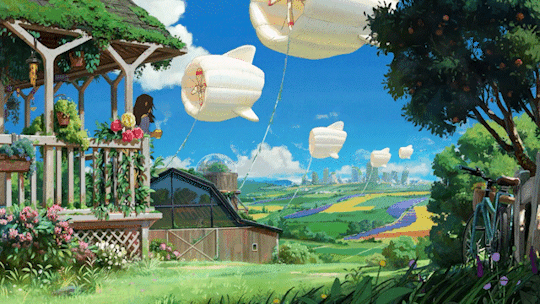
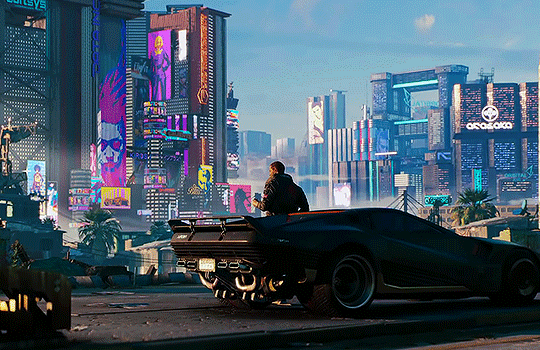
Cont. My solution is to create a hybrid proposal somewhere between cyberpunk and solarpunk; a city that presents like solarpunk, but that has achieved this green, sustainable self-expression without renouncing its colonial and capitalist exploitation of vulnerable peoples and environments elsewhere. Essentially, this would make the city the large-scale equivalent of one of those high-end clothing brands that have "recycled" symbols on their tags, but that have their product made in deplorable overseas sweatshops. The message of the novel would, thus, be amplified to include the idea that there can be no environmental justice without social justice. Does it work? We'll see. That's what I've got so far.
Researched the Link between Colonialism, Environmental Catastrophe and Capitalism: To educate myself on the main themes of the novel and how these can be better incorporated into the setting, I picked up Chaos in the Heavens: The Forgotten History of Climate Change by Jean-Baptiste Fressoz & Fabien Locher, and translated by Gregory Elliott. And let me tell you, I was not expecting to learn what I learned!!! This book is honestly fire. I had no idea climate science was so deeply rooted in colonialism!! Honestly, more than any other book I've read so far, Chaos in the Heavens articulates the link between the three main themes I've been trying to work with so, so clearly. Now I understand why people say we're lazy because we get too much sun. Or why all the native trees got cut down and replaced with pines. Eye-Opening!!! 100000% recommend.
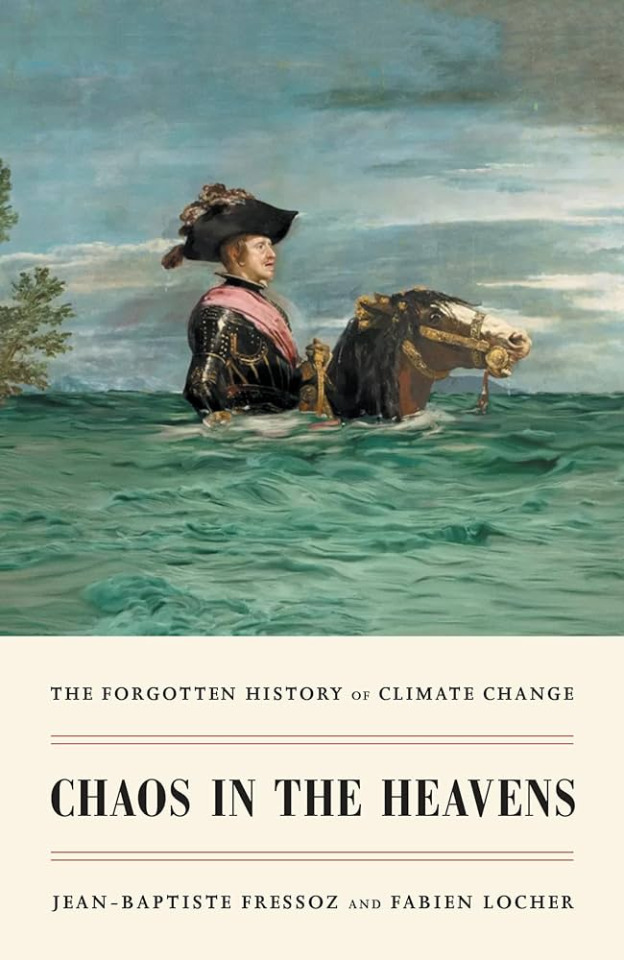
REMINDERS:
Answer pending asks, and publish that promised worldbuilding post on the geography, flora & fauna of The Sorcerer’s Apprentice universe, you know the drill lol
Research Transhumanism.
Research Designs for Sustainable Cities and New Green Technologies.
TAG LIST: (ask to be + or - ) @the-finch-address @fearofahumanplanet @winterninja-fr @avrablake @outpost51 @d3mon-ology @hippiewrites @threeking @lexiklecksi @achilleanmafia @blind-the-winds
© 2024 The Sorcerer’s Apprentice. All rights reserved.
#writeblr#writeblr community#writblr#writers of tumblr#writers on tumblr#original fiction#wip#writing community#writblr community#writing#progress update#biweekly progress update#colonialism#solarpunk#cyberpunk#fiction#sci fi and fantasy#am writing#book writing#my writing#novel writing#creative writing#writers on writing
13 notes
·
View notes
Text
Book Review: Girl of Light by Elana Gomel
Sapha Burnell wrote a review of Elana Gomel’s Girl of Light, check the review out on Goodreads, and come join us in celebrating Elana’s new book!

Girl of Light by Elana Gomel My rating: 5 of 5 stars As chilling as a deep unending winter. A mind-warp on the monstrosity of belief taken too far, wrapped around a war story told in a young woman's voice. As powerful as the bullets fired from a nagant. Girl of Light features the teenaged Svetlana, a studious girl who dreams of becoming a battlefield nurse to aide in MotherLand's war against Wulfstan. She trusts the Voice, a strange series of sounds which emanate from MotherLand's mirrors, and dictates what to do about the monsters which everyone needs to watch out for. All evil becomes known, as the rot inside a person's soul transforms them into oboroten, or other monstrous forms. They weren't pure enough, they weren't light enough. This novel is the epitome of horror and fantasy, a dark look into fanaticism and belief. Elana creates powerful and human characters, who claw and fight both with the monsters in MotherLand, and the impending onslaught of Wulfstan's nefarious march. This will be a classic. View all my reviews
3 notes
·
View notes
Text

The inferno of the living is not something that will be; if there is one, it is what is already here, the inferno where we live every day, that we form by being together. There are two ways to escape suffering it. The first is easy for many: accept the inferno and become such a part of it that you can no longer see it. The second is risky and demands constant vigilance and apprehension: seek and learn to recognize who and what, in the midst of inferno, are not inferno, then make them endure, give them space.





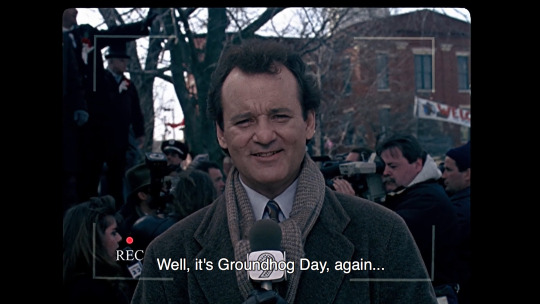
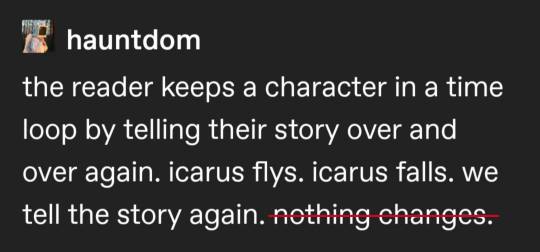
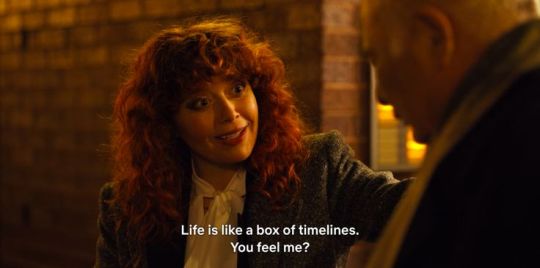
"The future is no longer the target toward which we are progressing (or regressing); rather, it is a vague unspecified disaster that may come to pass—but not yet."
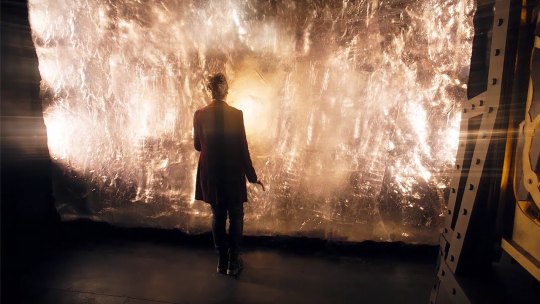
We will always be in that most dangerous, most exciting, most possible time of all: the now. Where we never can know what shape the next moment will take.
~~~
You shiver, and the city shivers with you.
Purgatorial state as the horror of repetition and the bliss of having another chance. The same story told a million different ways. Ship of Theseus. Subjective perception of reality. Cities as keepers of memory. Human connections as comfort. The goal of continuous transformation. The promise and threat of tomorrow.
'Dante in Hell' or 'Dante, led by Virgil, Consoles the Souls of the Envious', painting by Hippolyte Flandrin - contrary to its primary title, shows a scene from the second circle of Purgatory in Canto III of Purgatorio
screencap from Disco Elysium, Harry and Kim confront The Deserter
fragment from 'Invisible Cities' by Italo Calvino, translated by William Weaver
film frame from 'A Girl Walks Home Alone at Night', Arash with the cat walking past the pit of dead bodies in Bad City
screencap from Disco Elysium, Kim tells off The Racist Lorry Driver
definition of limbo from online Merriam-Webster dictionary
definition of purgatory from online encyclopedia Britannica
film screencaps from 'In Bruges' showing Ray and Ken in front of The Last Judgment middle panel - between hell and paradise (a triptych of disputed authorship, either by Hieronymus Bosch, his workshop, or a collaboration, in Groeningemuseum, Bruges)
screencap from Disco Elysium, Tommy explaining the Jam
film screencap from 'Groundhog Day', Phil in Punxsutawney
a post by @hauntdom, altered by me for the post's needs
a screencap from 'Russian Doll', Nadia in the loop, New York
a quote from 'Limbotopia: The “New Present” and the Literary Imagination', article by Elana Gomel and Vered Karti Shemtov
film frame from Doctor Who episode (season 9, episode 11) 'Heaven Sent', Doctor in the loop standing in front of the wall
a quote from the podcast Welcome to Night Vale (episode 21) 'A Memory of Europe', Night Vale as town inside a time bubble
#tw death#i don't know what warnings to put on that dead body pit#tw gore#? mild but i guess#disco elysium#web weaving#comparative#in bruges#russian doll#groundhog day#welcome to night vale#limbotopia#limbo#purgatory#heaven sent#invisible cities#italo calvino#time loop#time bubble#la revacholière#revachol#Revachol forever#kim kitsuragi#harry du bois#dante and virgil#long post#thank you @brennisteinnexe for providing the disco elysium limbo screens!
341 notes
·
View notes
Quote
Alternate histories, theoretically speaking, may start off at any fork in the historical road. The rise of Christianity, the fall of Rome, the Black Death, the Spanish Armada, the American Civil War…History is filled with such decisive "kernels" and SF would never run out of new counterfactuals to explore. And indeed, for each scenario outlined in Virtual History it is possible to find a corresponding SF novel or short story. The scenario of the Spanish Armada conquering England, for example, is the foundation of Keith Roberts' classic novel Pavane (1966), while the consequences of the Black Death depopulating Europe are explored in Kim Stanley Robinson's Years of Rice and Salt (2002). But outnumbering any other event a hundred to one as the foundation for an alternate history is Hitler's victory in World War II. Gavriel Rosenfeld's 2005 book The World Hitler Never Made documents hundreds of novels, short stories, comic books, TV series, and movies dedicated to a Nazi victory. And since 2005, their number has only grown. The question is: why this particular fork in the road? It is hard to argue on general grounds that Hitler's victory would have been more momentous than the rise of Christianity. Nor is its historical proximity to our own time sufficient to explain the astonishing potency of this counterfactual. The collapse of the Soviet Union, for example, much more recent, to the best of my knowledge, has not generated any alternate histories in the West and precious few in Russia. Rosenfeld's answer to this question is that the proliferation of alternate histories of Nazism "point to a growing normalizing trend in the Western memory of the Nazi era" (25). But this is a strange claim, considering the fact that "normal" history quickly passes out of the ken of popular culture. It seems that precisely the opposite trend is going on. Rather than being "normalized" into history, Nazism is elevated into mythology.
Elana Gomel, Postmodern Science Fiction and Temporal Imagination (2010)
121 notes
·
View notes
Photo







Thinking about Midnight Mass again in the context of two articles I read last quarter (the first two quotes are from J. Albert Harrill, “Cannibalistic Language in the Fourth Gospel and Greco-Roman Polemics of Factionalism (John 6:52-66)” (2008), https://www.jstor.org/stable/25610110; the second two quotes are from Elana Gomel, “The Plague of Utopias: Pestilence and the Apocalyptic Body” (2000), https://www.jstor.org/stable/827840))
58 notes
·
View notes
Quote
The characters in Cronenberg’s later film Crash, who obsessively re-enact car crashes in order to assign to them erotic significance, follow the same road as the Mantle twins, who also attempt to accept ‘the biomorphic horror of our bodies’ with their ‘soft geometries’ (Ballard, 1990: 61, 57). The scandalous scene of a man making love to the wound in a woman’s thigh in the former film recalls the vaginal slit on a male abdomen in Videodrome and parallels the scandal of the twins’ self-mutilation in DR, an attempt to break through the protective carapace (retracting the ‘mantle’). In Cronenberg’s artistic vocabulary, however, both are acts of existential courage, implying a symbolic recognition of the impurity of the flesh. Moreover, in both films this recognition involves a feminization of the protagonists: in Crash, the psychoanalytical ‘wound’ of femininity becomes translated into real scars, which impartially adorn the bodies of both male and female characters, while in DR the sons of Zeus splay themselves in the gynecological chair which, in their economy of the Same, represents difference, contingency and corporeality. The monstrosity of Claire and other women in DR should be read [...] not as an expression of misogyny but its very subversion. Monstrosity is life; purity and perfection are sterility and death.
Elana Gomel and Stephen Weninger. Cronenberg, Greenaway and the Ideologies of Twinship.
29 notes
·
View notes
Photo

Consumed: Tales Inspired by the Wendigo, edited by Hollie & Henry Snider, Denver Horror Collective, 2020. Cover design by Cakamura Design, info: denverhorror.com.
Hunger that changes you... consumes you... turning you into a nightmare version of what you once were. From desolate snowy mountains and apocalyptic wastelands to New York’s sex clubs and virtual encounters, Denver Horror Collective brings you, dear reader, visions of horror inspired by the Wendigo. With an introduction from Owl Goingback, authors treating you to this plate of delicacies include Wrath James White, Steve Rasnic Tem, Dana Fredsti, R. Michael Burns, Angela Sylvaine, Ian Neligh, P.L. McMillan, Michael Aloisi, Amanda Headlee, Joy Yehle, Ross Baxter, K.D. Webster, Ray Zacek, Elana Gomel, Marlin Bressi, Brenda S. Tolian, J.T. Evans, and Christophe Maso. So sit back and take a nibble to satisfy your cravings. Better yet, devour these pages and be Consumed by what’s inside.
Contents: Introduction – Owl Goingback Cravings – R. Michael Burns Starved – Angela Sylvaine Adaptation – Ian Neligh The Screaming Tree – Dana Fredsti Planet of the Hungry – P.L. McMillan Likes – Michael Aloisi Journal of Milton Parker – Amanda Headlee Hoard – Joy Yehle Unsolicited – Wrath James White The Hudson Hunger – Ross Baxter The One That Got Away – K.D. Webster Road Demon – Ray Zacek Touching Wood – Elana Gomel East of Avon – Marlin Bressi Blood Mountain – Brenda S. Tolian An Gorta Mor – Steve Rasnic Tem Cabin Fever – J.T. Evans Feast of the Senses – Christophe Maso Note From the Publisher – Josh Schlossberg Biographies
31 notes
·
View notes
Text
Author Spotlight : Elana Gomel
Author Spotlight : Elana Gomel
Elana started off writing academic papers, but for the last seven has been writing fiction. At seven years old she read a Jules Verne novel and decided that she would write a better one the following year…it took her a slight bit longer. Elana chooses to be an indie author because as an academic she lives with strict rules and schedules. She wants a bit of creative freedom in her writing. She…

View On WordPress
2 notes
·
View notes
Text

They say you should write what you know. So writer Elana Gomel wrote about her backyard. Sort of. In this exclusive interview, she discusses her dark fantasy novel "Nightwood" 📖🌳🌲🌳🌳🌲
#ElanaGomel#ElanaGomelInterview#ElanaGomelNightwood#ElanaGomelNightwoodInterview#ElanaGomelGirlOfLight#Books#Reading#AuthorInterview#Fantasy
0 notes
Photo


Issue 4 of Unfading Daydream is here! Issue 4 is themed: RETOLD! Famous stories re-imagined. We have everything from a retelling of The Little Mermaid to a unique take on Japanese mythology.
The featured stories are by: Alice Godwin, Elana Gomel, Russel Hemmell, Shannon Lippert, Cate Millican,Naomi Brett Rourke, Andrea Teare, Rachel Unger, and Stanley B. Webb.
Hard copies can be found HERE!
Digital copies can be found HERE!
We are also pleased to announce that our Year 1 Anthology is for sale as well! The anthology features the first year's stories; our pilot magazine, as well as the second issue, which was themed 'supernatural.'
The featured stories are written by: Lisa Alfano, John Baltisberger, Donovan Bertch, Alven Burgett, Stacie Dunham, Olivia Hennis, J.A.W. McCarthy, Cate Millican, Charles Roland, J.R. Rustrian, G.E. Smith, Fanni Suto, Austin T. Twenter, C. Whitmer, and John William Worth.
Hard copies can be found HERE!
Digital copies can be found HERE!
As usual, physical copies are only available while supplies last~
24 notes
·
View notes
Text
The Plague of Utopias: Pestilence and the Apocalyptic Body
When reading “Inventory” from Carmen Machado’s Her Body and Other Parties, I found myself wondering where exactly the grotesque fit into the narrative. I had completely missed its mention of the plague, a concept that at the time of the book’s publication would have been immediately recognizable as grotesque, or even horror. This made me realize how desensitized I’ve become to sickness, quarantine, panic, and death in the media because of our collective experience with the Covid-19 pandemic.
However, this got me thinking about commonly used horror tropes in our traditional literary cannon. Elana Gomel’s The Plague of Utopias: Pestilence and the Apocalyptic Body is a great analysis of the plague trope and of our anxieties about an apocalyptic world. The work focuses on the relationship between plague, apocalypse, and religion (specifically Christian). I love how Gomel integrates physical bodies and sexuality into the conversation, themes that run through Her Body and Other Parties. She also continually highlights the trope’s fixation on abuse of the body. In this way, I believe parts of Gomel’s piece become a reflection of what Machado means to explore in the stories of her book. I have included a screenshot of Gomel’s opening paragraphs and highlighted some quotes I find important to both Gomel and Machado’s pieces.
Here’s the URL to the full PDF: https://www.jstor.org/stable/pdf/827840.pdf?refreqid=excelsior%3A43f6341733c71224c6515d779951a64e

0 notes
Photo


Hmmmmm (from Elana Gomel, “The Plague of Utopias: Pestilence and the Apocalyptic Body,” in Twentieth Century Literature, Winter, 2000, Vol. 46, No. 4, Literature and Apocalypse, pp. 405-433)
9 notes
·
View notes
Text
27 july 2018
“Attic Order” -- David Keplinger; “A Ritual to Read to Each Other” -- William E. Stafford; “yasmeen” -- Safia Elhillo [1]; “prayer is better than sleep” -- Momina Mela; more of Paradise Lost -- Milton; more of Death in Venice -- Mann; Postmodern Science Fiction and Temporal Imagination -- Elana Gomel; The Ghost of Yotsuya -- Nakagawa Nobuo.

0 notes
Photo
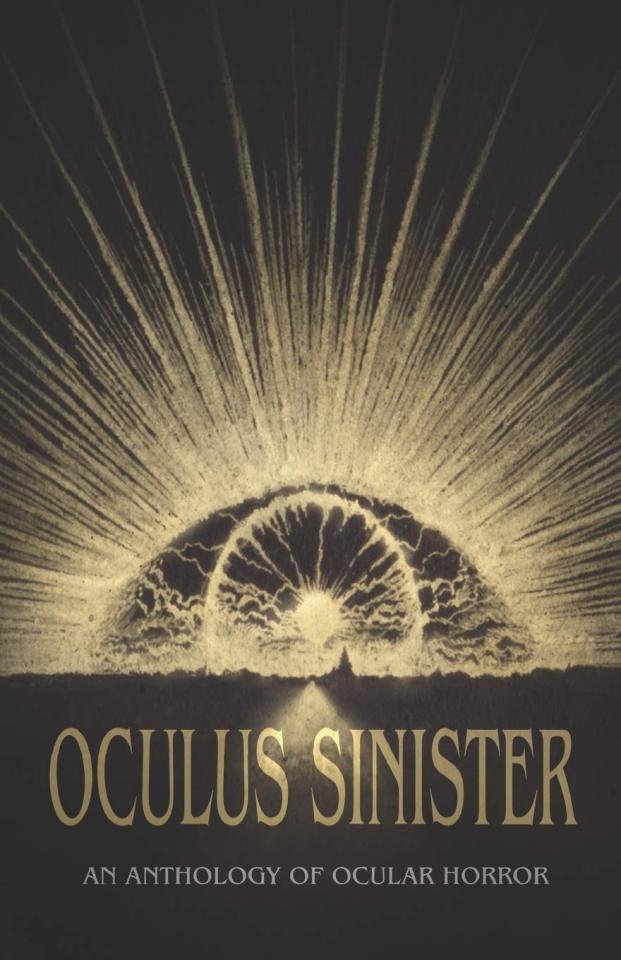
Oculus Sinister: An Anthology of Ocular Horror, Chthonic Matter, 2020. Cover art by Yaroslav Gerzhedovich/Shutterstock, info: chthonicmatter.wordpress.com.
Oculus Sinister features 20 dark visions, all of which take as their inspiration the theme of “visual perception” — stories involving eyesight, mirrors, cameras, film, television, and the like.
Contents: Lucida — Seán Padraic Birnie The Other Floor — Brian Evenson Black-Eyed Susan — Elana Gomel Brad Dourif’s Tears — Douglas Ford Dead Bread Head — Shannon Scott The Other One — Timothy Granville The Obscurantist — LC von Hessen Doorgrave To the Bittersea — Mark Howard Jones The Eyedom — Rhonda Eikamp The Visible Changes — Charles Wilkinson Director’s Cut — James Pate Contrition (1998) — J.A.W. McCarthy Angelica’s Elegy — Christopher K. Miller When This is Over — Selene dePackh The Bells Line of Road — M.R. Cosby Your Desolation Will Be Great — Michael Kelly When You See It — Rebecca J. Allred Vile Jellies — John Langan E is For Eye — Steve Rasnic Tem We Are Eternal — Sam Richard
31 notes
·
View notes